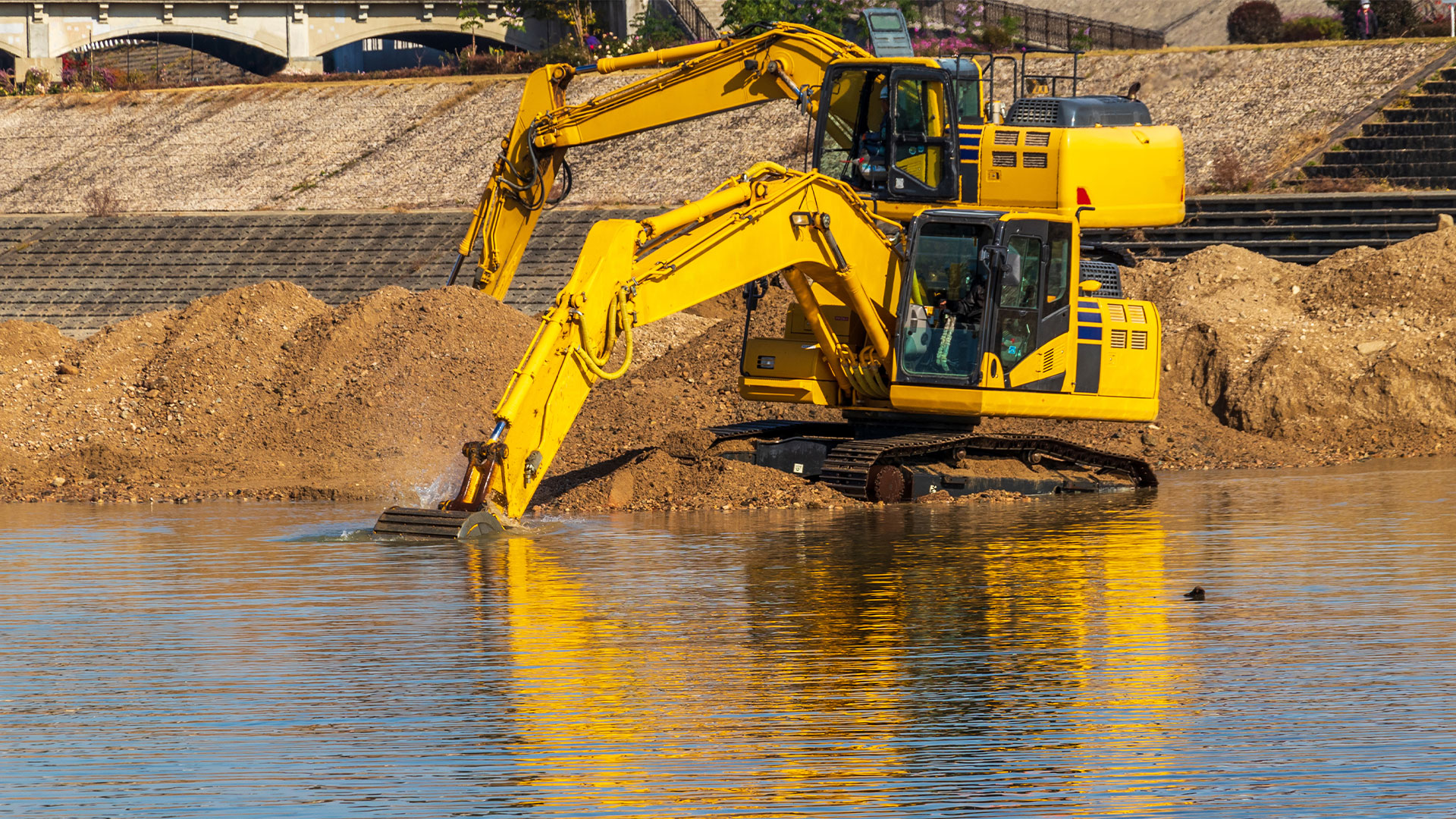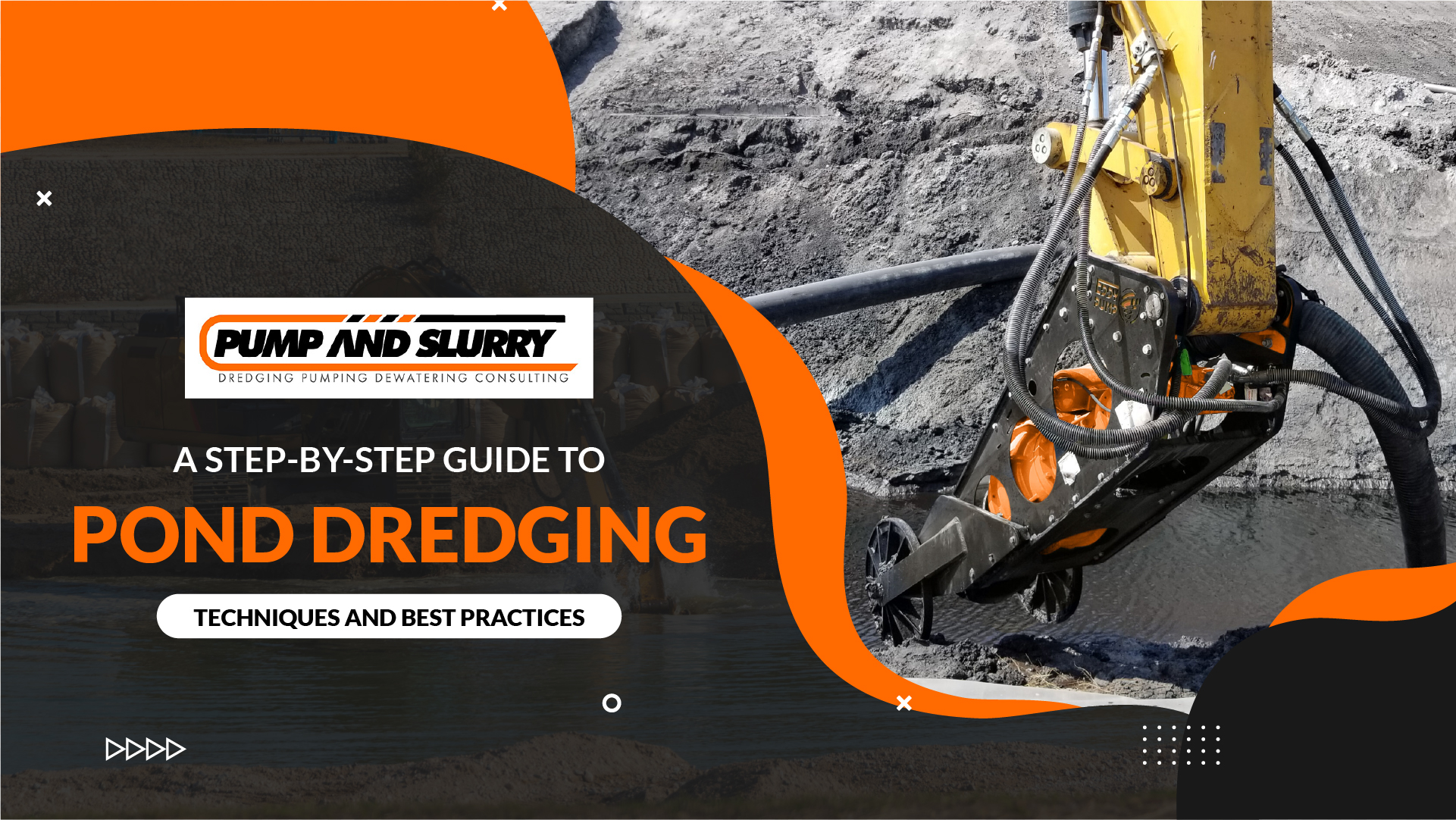Pond dredging is an essential maintenance process that helps restore a pond’s health by removing accumulated sediment, debris, and unwanted vegetation. Over time, natural processes like erosion, runoff, and decaying organic material cause sediment buildup, leading to reduced depth, poor water quality, and unhealthy aquatic ecosystems. Regular dredging can enhance the pond’s lifespan, improve water clarity, and restore its ecological balance. Whether you’re searching for a professional “pond dredge near me” or planning to tackle it yourself, this article provides a step-by-step guide to pond dredging, including the different techniques available, best practices, and considerations for a successful dredging project.
Why Pond Dredging is Necessary
Pond dredging addresses a common problem: sediment accumulation. Sediment, composed of soil, organic matter, and debris, naturally settles at the bottom of ponds. While this process is slow, over time, excessive sediment buildup can lead to reduced water depth, poor water quality, and suffocation of aquatic life. This sediment buildup may block out sunlight, lower oxygen levels, and lead to the growth of unwanted algae.
Regular dredging keeps ponds clear of excessive sediment, helping to:
- Improve water quality by reducing nutrient overload and harmful algae growth.
- Increase pond depth, improving habitat for fish and other aquatic life.
- Restore the pond’s aesthetic and recreational value.
Some signs that indicate it’s time to dredge a pond include shallow water depth, foul odors from decaying matter, increased plant growth, and a noticeable decline in water quality. When faced with these issues, you might search for “pond dredge near me” to find the right service providers.
Pre-Dredging Assessment

Before beginning the dredging process, it is crucial to conduct a thorough pre-dredging assessment. This includes performing a pond survey to assess the current depth, sediment composition, and the volume of material that needs to be removed. A detailed depth analysis will help identify areas with the highest sediment accumulation, which is vital for determining how to execute pond dredging effectively.
Environmental considerations are crucial, as dredging can impact the local ecosystem. A proper environmental impact assessment (EIA) may be required, especially for larger ponds, to understand how dredging might affect aquatic life, vegetation, and water quality. Legal requirements and permits for dredging should also be considered, as most regions have specific regulations that must be followed to protect the environment.
At this stage, property owners should also determine if they will hire a professional contractor or take on the project themselves. Hiring professionals is often more efficient for larger ponds, while DIY dredging may be feasible for small water bodies. Searching for “pond dredge near me” can connect you with local contractors who are experienced in this work.
Selecting the Appropriate Dredging Technique

There are several pond dredging techniques to choose from, each tailored to different pond sizes and sediment types. Here are the most common methods for effective pond dredging:
Hydraulic Dredging
Hydraulic dredging involves using a suction pump to remove sediment and mixing it with water to create a slurry that is pumped out of the pond. This method is ideal for large ponds with fine sediments and minimal environmental disturbance. It is also cost-effective, as it can cover large areas quickly and requires less labor.
Mechanical Dredging
Mechanical dredging involves excavating sediment with heavy machinery such as backhoes, excavators, or dredge pumps. This method is best for smaller ponds or ponds with heavier sediment loads. It is more invasive than hydraulic dredging, but it is effective for ponds that require deep excavation or removal of large debris.
Suction Dredging
Suction dredging uses suction devices to vacuum up sediment, similar to hydraulic dredging but often on a smaller scale. This method is effective for maintaining pond ecology as it causes minimal disturbance to the pond’s ecosystem. It is ideal for ponds with delicate wildlife or where precision is required.
The Dredging Process: A Step-by-Step Approach

Once you’ve selected the appropriate technique, the dredging process can begin. Here’s a breakdown of the key steps:
Step 1: Preparation and Setup
The first step involves preparing the pond and site for dredging. This includes implementing safety protocols, removing any unnecessary structures or obstacles around the pond, and assembling the necessary equipment, such as pumps, dredges, or excavators.
Step 2: Sediment Removal
Sediment removal is conducted based on the technique selected. Whether using mechanical or hydraulic dredging, the goal is to remove accumulated sediment without causing excessive disruption to the pond’s ecosystem. Care should be taken to avoid disturbing the pond’s wildlife and aquatic plants, which could affect the pond’s overall health.
Step 3: Disposal of Dredged Material
Once sediment is removed, proper disposal is crucial. Sediment management involves drying out dredged material in designated areas before appropriate disposal. It is essential to follow environmental guidelines for sediment disposal to prevent contamination of nearby land or water sources.
Step 4: Post-Dredging Maintenance
After dredging is completed, testing the water quality is important to ensure that the process has improved the pond’s ecosystem. Post-dredging maintenance may also involve replanting aquatic vegetation, which helps stabilize the ecosystem and prevent future sediment buildup.
Best Practices for Effective Pond Dredging
To ensure the dredging project is as effective and sustainable as possible, consider the following best practices:
- Timing the project: The best time to dredge a pond is during dry seasons when water levels are lower, reducing the risk of runoff and further sediment accumulation.
- Prevent future sediment buildup: Installing buffer zones or barriers around the pond to prevent erosion and runoff can reduce sediment accumulation.
- Ongoing maintenance: Regular maintenance, including checking water quality, managing aquatic vegetation, and addressing minor sediment buildup, can extend the benefits of dredging.
Cost Considerations
The cost of pond cleaning depends on various factors, including the pond’s size, sediment depth, and the chosen technique. Hydraulic dredging tends to be less labor-intensive and may be more cost-effective for large ponds, while mechanical dredging is often more suitable for smaller, heavily silted ponds.
Another important cost factor is deciding between DIY dredging and hiring professionals. While DIY projects can save money, professional contractors have the experience and equipment to handle larger projects efficiently. Investing in regular dredging and maintenance can save money in the long term by extending the pond’s life and reducing the need to dredge a pond frequently.
Environmental and Ecological Considerations
Pond dredging has the potential to impact local ecosystems, so minimizing this impact is crucial. Steps can be taken to preserve aquatic life and protect vegetation during the dredging process, such as using eco-friendly equipment and ensuring sediment is carefully removed without damaging the habitat.
Addressing the needs of local wildlife, especially fish and birds, should be a priority. Ensuring the pond’s ecological balance remains intact post-dredging is essential for the long-term success of the project.
Conclusion
Pond dredging is a necessary step in maintaining pond health, functionality, and aesthetics. By following a clear step-by-step guide, selecting the appropriate technique, and adhering to best practices, pond owners can ensure that their ponds remain a vital part of the local environment. Whether hiring a professional contractor through a “pond dredge near me” search or taking on a DIY project, the key to successful pond cleaning lies in careful planning and a commitment to ongoing maintenance.
Proactively maintaining your pond not only enhances its immediate appeal but also ensures its longevity for years to come.








